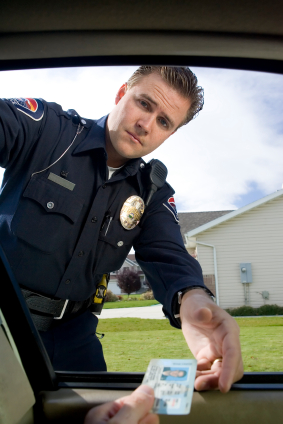
Every person who was arrested for driving under the influence in Illinois should look back at the traffic stop. The question that must be answered is, why was the defendant pulled over in the first place?
A traffic stop is legally a seizure that falls under the 4th Amendment to the United States Constitution. The 4th Amendment prohibits unreasonable searches and seizures. It requires the police to have probable cause before they can seize a person or his property.
In some instances, probable cause is not necessary. For example, the police can stop a vehicle on the road if they have reasonable suspicion of criminal activity. Reasonable suspicion of a vehicle code violation is enough to curb a vehicle.
In probably 90 percent of DUI cases, the police officer will issue the driver a ticket for improper lane usage (ILU). The statute for improper lane usage is found in the Illinois Vehicle Code (IVC) at 625 ILCS 5/11-709. A person who received a ticket for improper lane usage as part of a DUI can see the statute citation on the front of the ticket. The officer should check the box marked 11-709 (ILU).
The law against improper lane usage says that a person must drive his vehicle within one lane as nearly as practicable. The specific language from the statute is the following:
A vehicle shall be driven as nearly as practicable entirely within a single lane and shall not be moved from such lane until the driver has first ascertained that such movement can be made with safety.
See 625 ILCS 5/11-709(a).
When the police cite a driver for improper lane usage they are relying on this language as the basis of the lane violation. Basically, their contention is that the vehicle was not driven within a single lane.
The problem with this conclusion, however, is that the statute does not require the driver to remain within a single lane. Instead, the statute expressly provides that the driver must do so as nearly as practicable.
The issue is, what is practicable? A driver can swerve to avoid hazards in the road or traffic. That is not against the law. The only restriction on the vehicle’s movement is that the driver must first ascertain that the movement can be made safely.
In DUI cases, the police often tail the vehicle and observe some movement to and from the lane. They watch the driver’s side and passenger side tires, looking for the tires to cross over the white fog line on the outside of the road, a dotted white line on the inside, or a solid yellow separating opposite lanes of traffic. Typically a police officer will pull over a motorist after seeing only one infraction.
All too often, a person who was arrested for DUI will see the ticket for improper lane usage, remember the police officer telling him that he was weaving or drifting, and assume that he must have committed a traffic violation. The problem is that often enough, the driver committed no lane violation.
A police officer’s opinion that a motorist committed improper lane usage is subjective. The law does not require strict compliance. In fact, it is just the opposite. A vehicle has to be driven in one lane as nearly as practicable.
In each case, it should be questioned whether there really was a lane violation. The squad video may show no violation.
And where there is no reasonable suspicion of a traffic violation, the case against the defendant can be thrown out.

